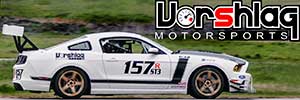Okay, so I know there are about a million threads on wheel and tire fitment, and trust me, I've seen most of them. However, none that I have found have given a straight answer on what I would like to know.
Here's my dilemma. 2011 Mustang GT with 3.73 gears, and I have 2 options picked out:
18x10 APEX EC-7 with 285/40r18 OR 285/35r18
19x10 SVE r357 with 285/35r19
So my question is, for the 18 inch wheel, which is better? A 40 aspect ratio or a 35? I'm not entirely sure if a higher sidewall is better for handling or if a lower one is? Also, if someone could explain to me how the gearing impacts tire and wheel selection? I've seen that mentioned a few times but I really don't understand why that would play a role.
And then the dreaded opinion that is everywhere...18 vs 19x10? I would like it to be 10 wide as the car sees a majority street use, and 11s would be pulling me out of my lane like crazy. And I know that for race tires, most are in 18 diameter, but I just don't know how 18s would be on the street.
I apologize for the long winded post, but this is something I have tried researching on my own but come up even more confused.
Here's my dilemma. 2011 Mustang GT with 3.73 gears, and I have 2 options picked out:
18x10 APEX EC-7 with 285/40r18 OR 285/35r18
19x10 SVE r357 with 285/35r19
So my question is, for the 18 inch wheel, which is better? A 40 aspect ratio or a 35? I'm not entirely sure if a higher sidewall is better for handling or if a lower one is? Also, if someone could explain to me how the gearing impacts tire and wheel selection? I've seen that mentioned a few times but I really don't understand why that would play a role.
And then the dreaded opinion that is everywhere...18 vs 19x10? I would like it to be 10 wide as the car sees a majority street use, and 11s would be pulling me out of my lane like crazy. And I know that for race tires, most are in 18 diameter, but I just don't know how 18s would be on the street.
I apologize for the long winded post, but this is something I have tried researching on my own but come up even more confused.













